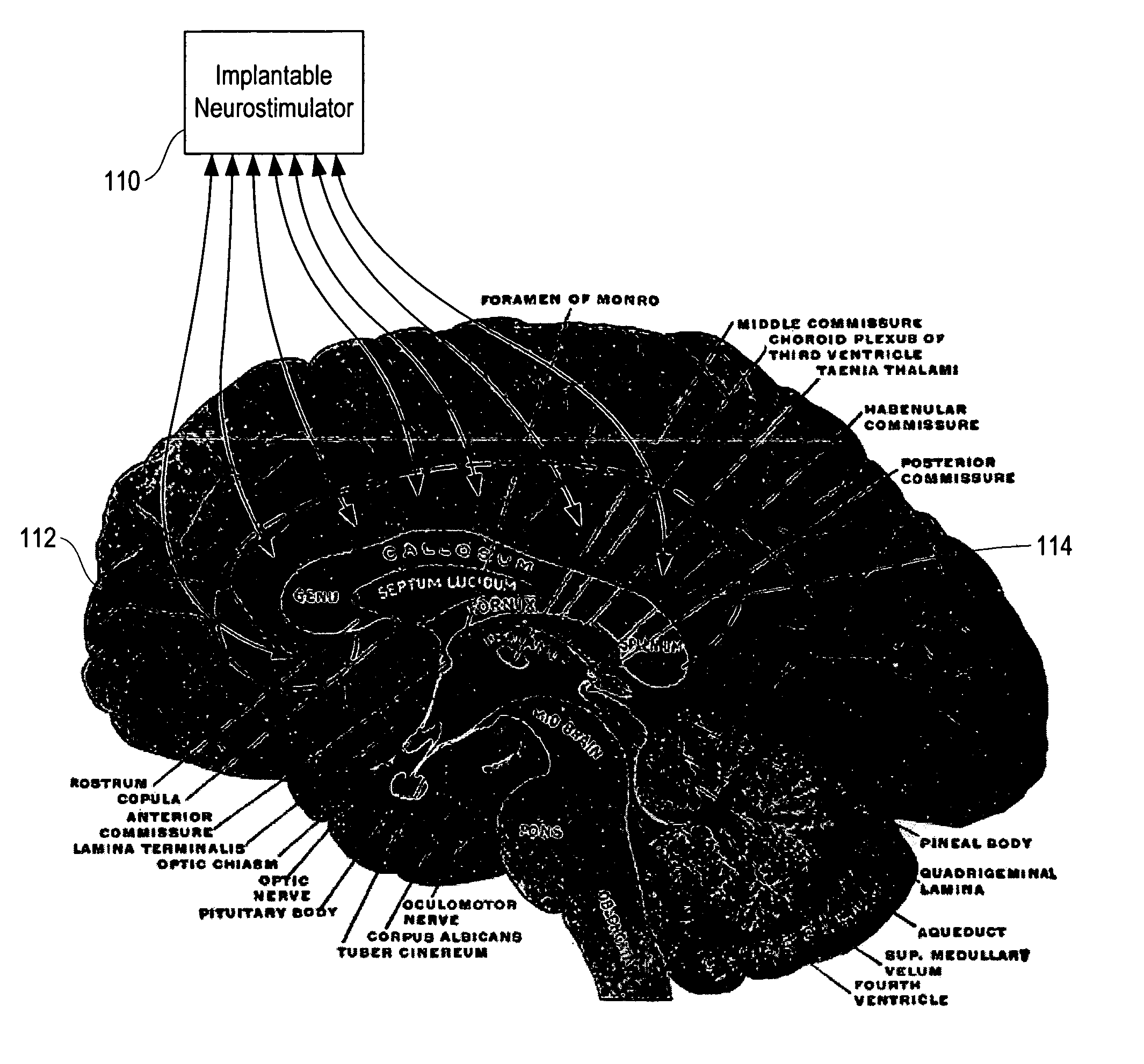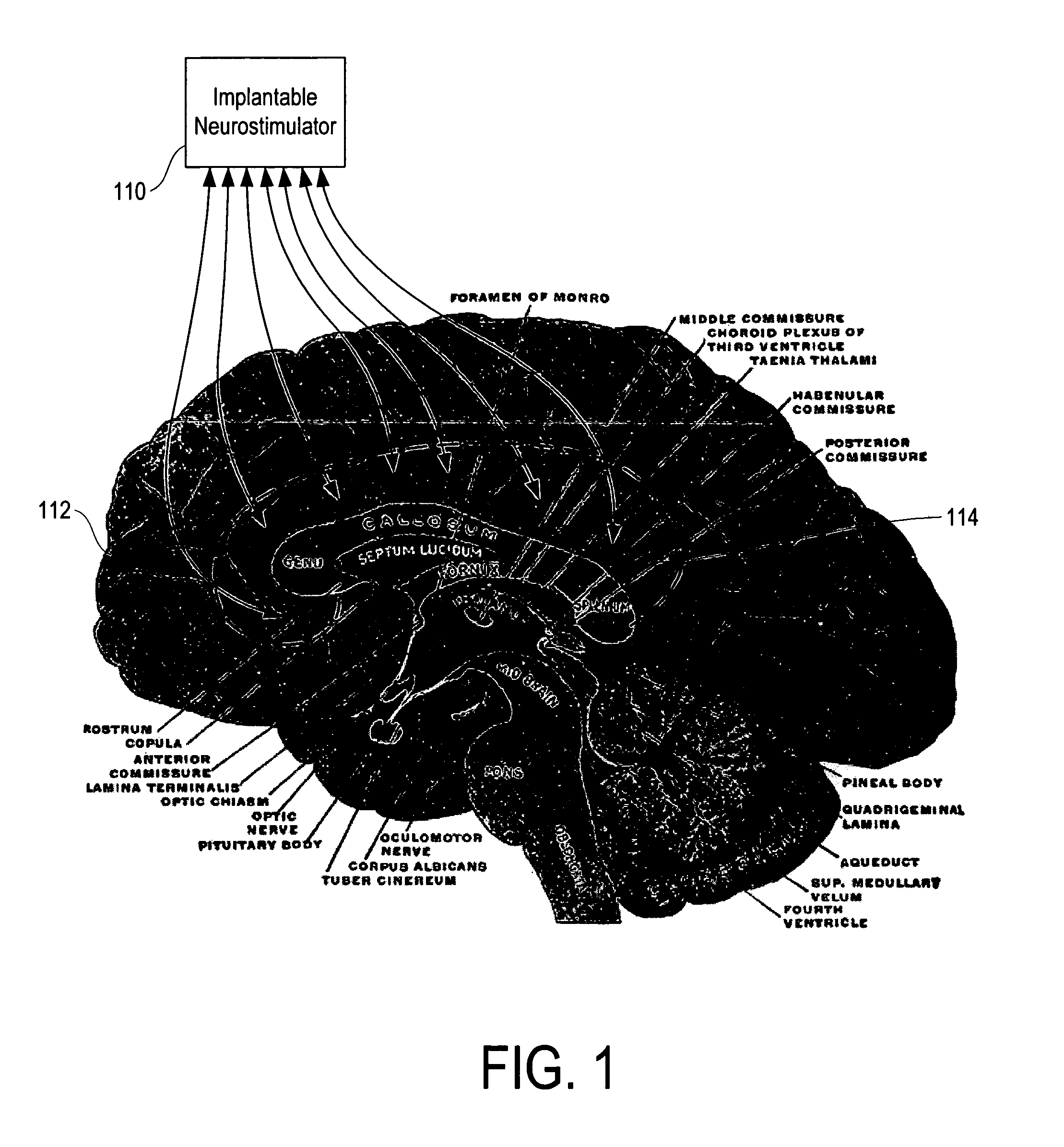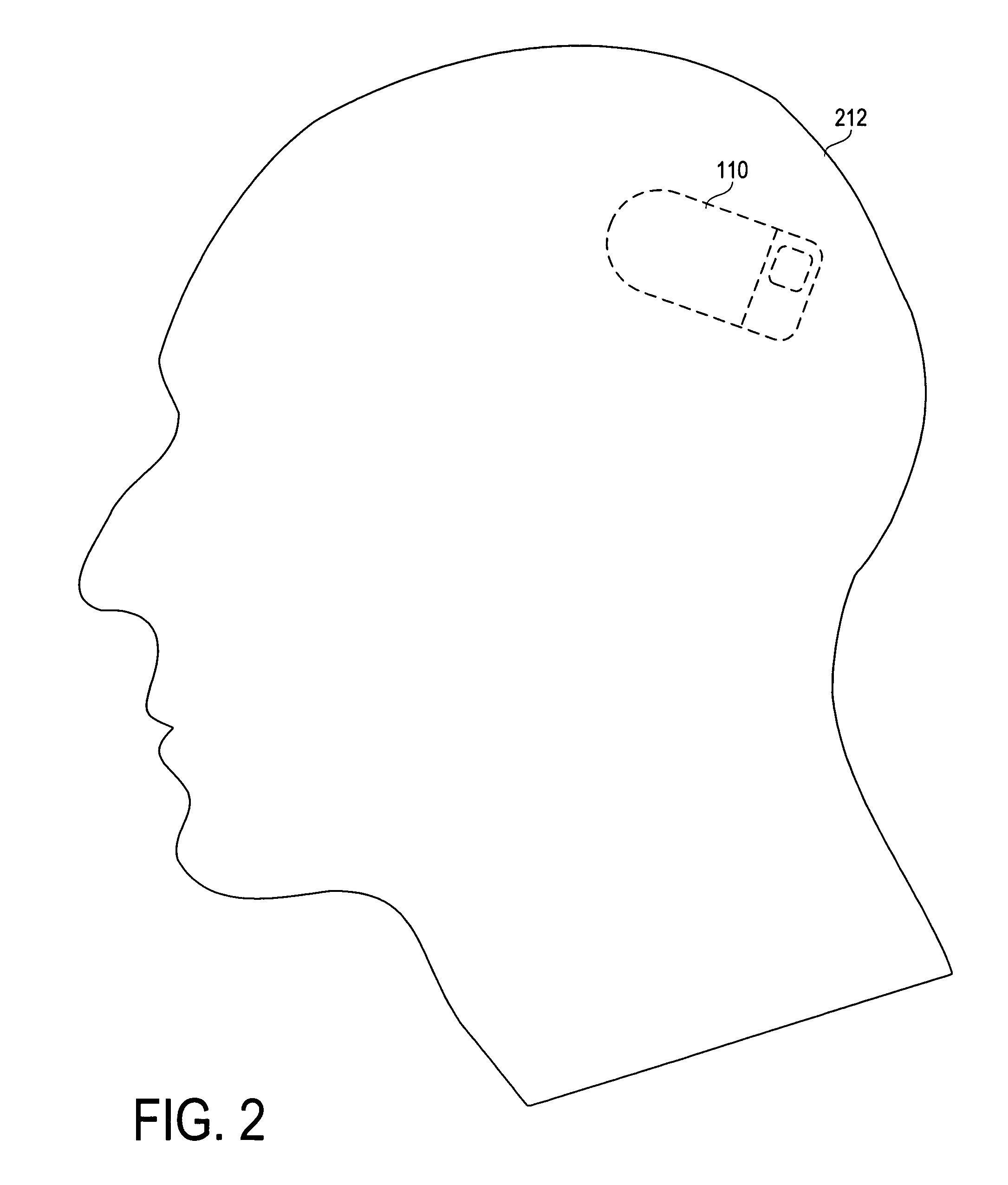Responsive therapy for psychiatric disorders
a psychiatric disorder and therapy technology, applied in the field of brain disorders, can solve the problems of untreated mental illness, increased morbidity and societal cost, and unhelpful others, and achieve the effect of reducing symptoms
- Summary
- Abstract
- Description
- Claims
- Application Information
AI Technical Summary
Benefits of technology
Problems solved by technology
Method used
Image
Examples
Embodiment Construction
[0043]The invention is described below, with reference to detailed illustrative embodiments. It will be apparent that a system according to the invention may be embodied in a wide variety of forms. Consequently, the specific structural and functional details disclosed herein are representative and do not limit the scope of the invention.
[0044]FIG. 1 illustrates, schematically, an implantable neurostimulator device 110 in communication with various locations within a patient's brain 112, particularly the cingulate gyrus 114. In a system according to the invention the neurostimulator device receives signals from the patient's brain 112 (or other physiological indicators) and responsively treats symptoms or conditions of psychological illness.
[0045]FIG. 2 depicts an intracranial implantation of the device 110 according to the invention, which in one embodiment is a small self-contained responsive neurostimulator. As the term is used herein, a responsive neurostimulator is a device capa...
PUM
 Login to View More
Login to View More Abstract
Description
Claims
Application Information
 Login to View More
Login to View More - R&D
- Intellectual Property
- Life Sciences
- Materials
- Tech Scout
- Unparalleled Data Quality
- Higher Quality Content
- 60% Fewer Hallucinations
Browse by: Latest US Patents, China's latest patents, Technical Efficacy Thesaurus, Application Domain, Technology Topic, Popular Technical Reports.
© 2025 PatSnap. All rights reserved.Legal|Privacy policy|Modern Slavery Act Transparency Statement|Sitemap|About US| Contact US: help@patsnap.com



